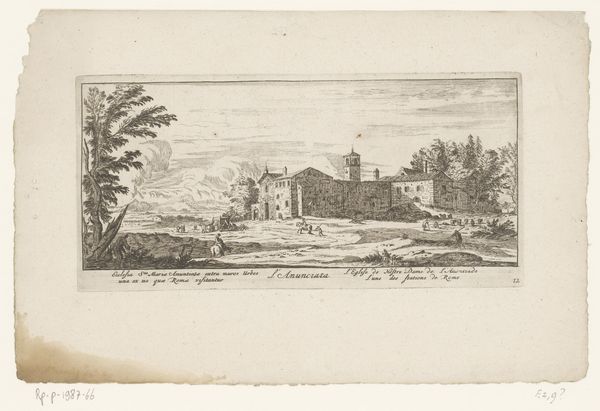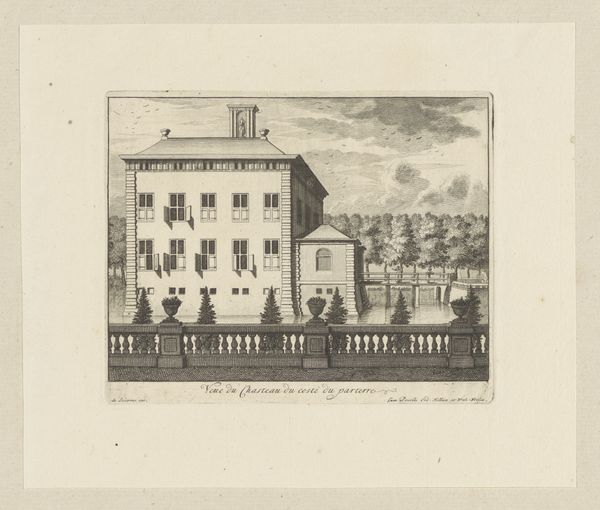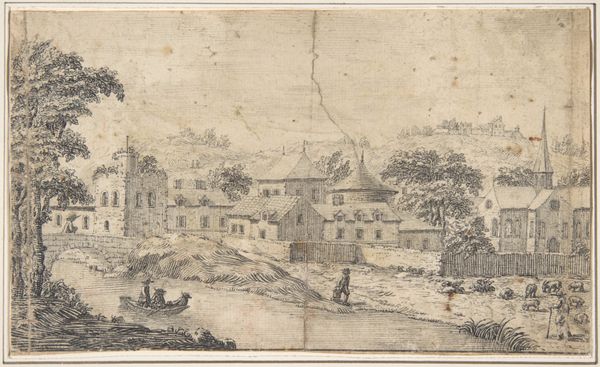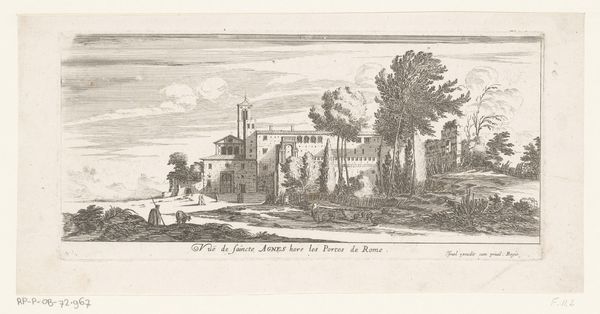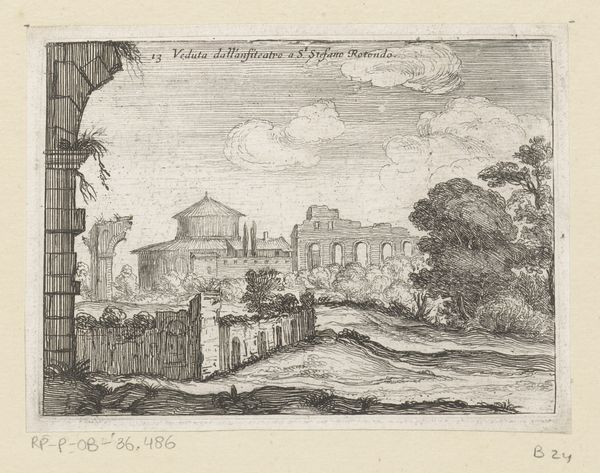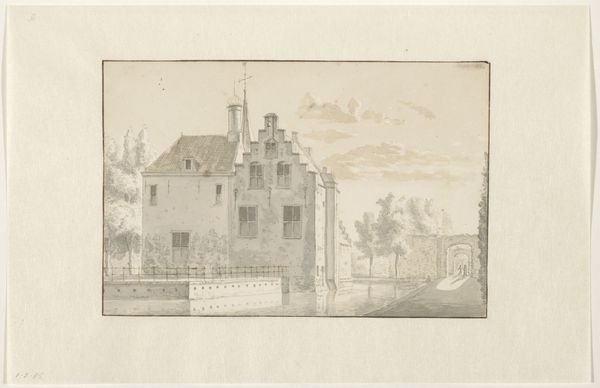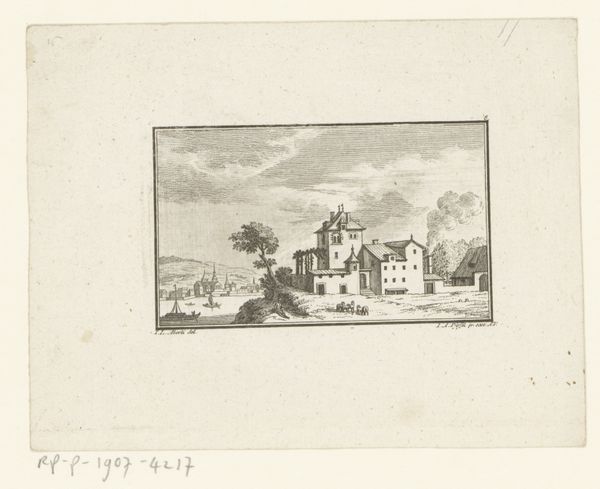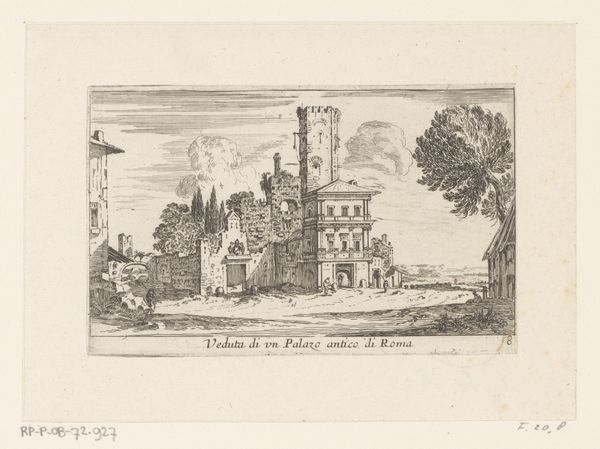
Dimensions: height 81 mm, width 109 mm
Copyright: Rijks Museum: Open Domain
Abraham Rademaker made this etching of Spangen Castle in 1573. The print is made with the incised line technique, where the artist uses a sharp tool to directly engrave an image into a metal plate. Think about the labor involved here, the skilled hand required to create a detailed image with such precision. The material itself, metal, resists the artist’s touch. Each line requires force, control, and a deep understanding of how ink will settle into these grooves. Prints like this one played an essential role in the distribution of images during this era. They democratized art, making it accessible to a wider audience than unique paintings could ever reach. Moreover, the subject matter is interesting. Not a pristine building, but one in ruins. This speaks to the transient nature of power, the inevitable decay of even the most imposing structures. So, when you look at this etching, consider not just the image, but the labor, the material, and the social context that gave rise to it. It challenges our notions of fine art, and invites us to appreciate the skill and intention embedded in every line.
Comments
No comments
Be the first to comment and join the conversation on the ultimate creative platform.
